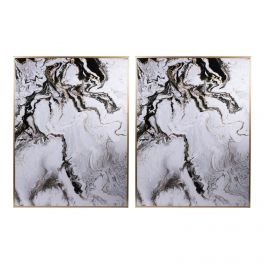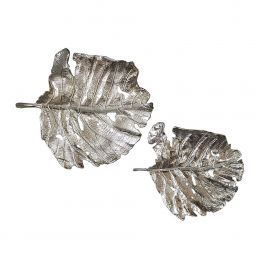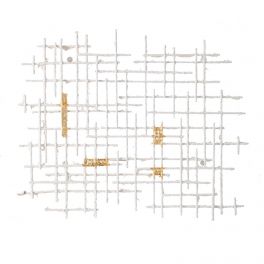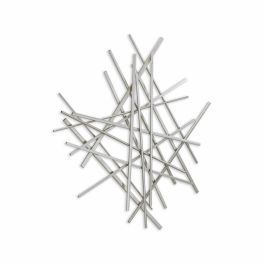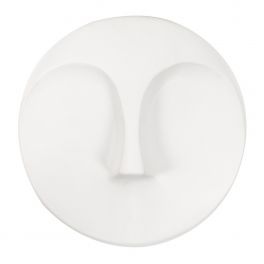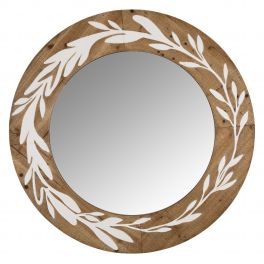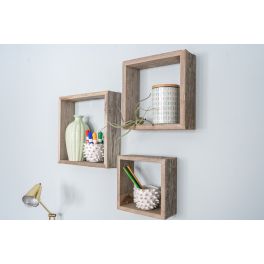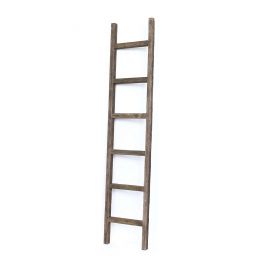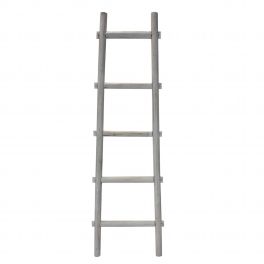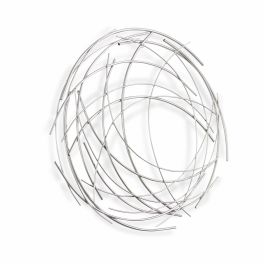Circles. Squares. Triangles. Rectangles. Geometric patterns can be found in nearly every aspect of interior design from flooring to wall or window coverings to furniture to accessories. Interior designers often use geometric design to create a bold statement or a “wow” focal point in room design. They also use geometric interior design to develop a sense of movement in a room, to direct the eye, or to create texture or depth.
Certainly, geometric patterns can have quite an impact. For example, look at how the diamond pattern on the rug in this room transforms an otherwise monochromatic space into something eye-catching.

Photo by Photographee.eu on Shutterstock
A “look at me” effect, however, isn’t always what is needed in your home décor. Just because something shouts doesn’t mean it has anything good to say.
In addition to adding pizzazz to a room, geometric shapes create a mood. Have you ever paid attention to how you feel when you see certain geometric shapes? Does a circle make you feel the same way a triangle does?
The above diamonds, for instance, give off a high energy vibe, a sort of frenetic edginess that could trigger vague feelings of annoyance. The impact is subtle, even unconscious. But it’s there.
Psychologists have long recognized that geometric shapes have a place in our mental and emotional landscape. They use such shapes in personality tests and have even used geometric forms to model human consciousness.
But why should you care?
Because the shapes you put in your home décor could be creating moods you don’t intend or want.
With the caveat that all people are different and there are exceptions to all rules, here is a primer on how different shapes can trigger different feelings or emotional states.

Photo by Africa Studio on Shutterstock
1. Circular Shapes
Circles flow, and as a result, they generate soft feelings like love, tenderness, affection, and compassion. They tend to create a caring state of mind. In personality tests, circles represent harmony and safety. You can see why using a few circular patterns in your home design might contribute to good relationships. They’re particularly well-suited to bedrooms and bathrooms.

Photo by Madhourse on Shutterstock
2. Square, Rectangle, or Pyramid Shapes
These straight edge shapes create more potent emotions like strength, power, and reliability. Because they spark a sense of stability, these shapes are good ones for office spaces.
In personality tests, they indicate a person who is hardworking, methodical, and analytical. This controlled energy, might not, therefore, create the right ambiance for bedrooms or family spaces. But if your use of squares is understated and balanced with other shapes, as in the room below, they will work fine.

Photo by ArtOfPhotos on Shutterstock
3. Vertical Shapes
Vertically-oriented shapes like vertical stripes or lines also suggest strength, but it's a more forceful sense of strength. These shapes are more dominating — sometimes even threatening. They are generally masculine in energy and can create either helpful feelings of courage or less useful feelings of aggression.
Only you can decide which effect you’ll get with stripes. Just be aware that if you use stripes in large pieces, you’ll need to balance that impact with solid colors in the rest of the room.

Photo by Det-anan on Shutterstock
4. Horizontal Shapes
Horizontally-oriented shapes like horizontal lines or stripes have more of a feminine energy. They create feelings of calm, restfulness, peace, and stillness. Like circular shapes, these lines are perfect for bedrooms. Notice how the horizontal shape of the log walls in this bedroom create a relaxed sense of sanctuary.

Photo by adpePhoto on Shutterstock
Horizontal shapes also are useful in dining areas (a feeling of calm is good for digestion), and actually, any place in the home.
5. Curved or Spiral Shapes
Curves are soft shapes. Their sense of movement creates feelings of pleasure, happiness, and generosity. If you’re decorating a retail space, using curves could get you more sales. As with horizontal shapes, curves are perfect for any part of your home décor. See here how they add a touch of romance to a bedroom.

Photo by Ds design studio on Shutterstock
6. Sharp or Angled Shapes
Sharp shapes like triangle, zigzags, and diamonds, as in the example at the start of this article, are high energy shapes. They can create explosive or violent feelings (especially if overused). They are dynamic shapes that can energize a room; but if they’re not used carefully, that energy can be so potent as to create an unconscious stress response.
Used judiciously, however, zigzags or patterns that are similar to zigzags can be beneficial. In personality testing, a person who is drawn to zigzags is a right-brained individual with a holistic perspective on the world. It could be argued that zigzags in hobby or office spaces could help you generate new ideas. To subtly add zigzags, consider choosing tile or wood flooring in that pattern.

Photo by alexandre zveiger on Adobe Stock
Or use throw pillows on a sofa you’re using in a creative space.

Photo by Tr1sha on Shutterstock
Given the vast array of geometric patterns available in flooring, furniture, wall paper, window coverings, pillows and other accessories, you can create literally any emotional impact you want in your space. Armed with an understanding of how geometric shapes impact your mood and a knowledge of how color affects you as well, you can be so on-purpose in your room design that you can use your home décor to elevate your mood, inspire you, motivate you, and create awesome relationships.
Have you explored the psychology of geometric design in your life? Do you know how shape affects you? Share your insights!






